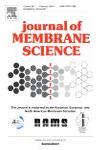版权所有:内蒙古大学图书馆 技术提供:维普资讯• 智图
内蒙古自治区呼和浩特市赛罕区大学西街235号 邮编: 010021

作者机构:SV Reg Coll Engn & Technol Dept Chem Engn Surat 395007 India Jadavpur Univ Dept Chem Engn Kolkata 700032 W Bengal India
出 版 物:《JOURNAL OF MEMBRANE SCIENCE》 (膜科学杂志)
年 卷 期:2003年第220卷第1-2期
页 面:155-164页
核心收录:
学科分类:081704[工学-应用化学] 07[理学] 0817[工学-化学工程与技术] 070304[理学-物理化学(含∶化学物理)] 08[工学] 0703[理学-化学]
主 题:emulsion liquid membrane artificial neural network back-propagation algorithm simulation solute concentration in feed phase
摘 要:An artificial neural network (ANN) model of emulsion liquid membrane (ELM) process is proposed in the present study which is able to predict solute concentration in feed during extraction operation and ultimate % extraction at different initial solute concentration in feed phase, internal reagent concentration, treat ratio, volume fraction of internal aqueous phase in emulsion and time. Because of the complexity in generalization of the phenomenon of ELM process by any mathematical model, the neural network proves to be a very promising method for the purpose of process simulation. The network uses the back-propagation algorithm (BPA) for evaluating the connection strengths representing the correlations between inputs (initial solute concentration in feed phase, internal reagent concentration, treat ratio, volume fraction of internal aqueous phase in emulsion and time) and outputs (solute concentration in feed during extraction operation and % extraction). The network employed in the present study uses five input nodes corresponding to the operating variables and two output nodes corresponding to the measurement of the performance of the network (solute concentration in feed during extraction and % extraction). Batch experiments are performed for separation of nickel(II) from aqueous sulphate solution of initial concentration in the 200-100 mg/l ranges. The network employed in the present study uses two hidden layers of optimum number of nodes being thirty and twenty. A leaning rate of 0.3 and momentum factor of 0.4 is used. The model predicted results in good agreement with the experimental data and the average deviations for all the cases are found to be well within +/-10%. (C) 2003 Elsevier B.V. All rights reserved.